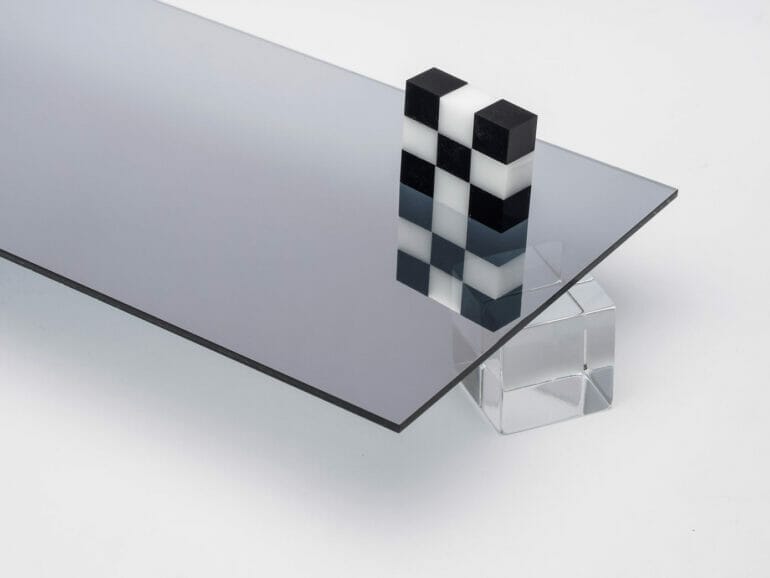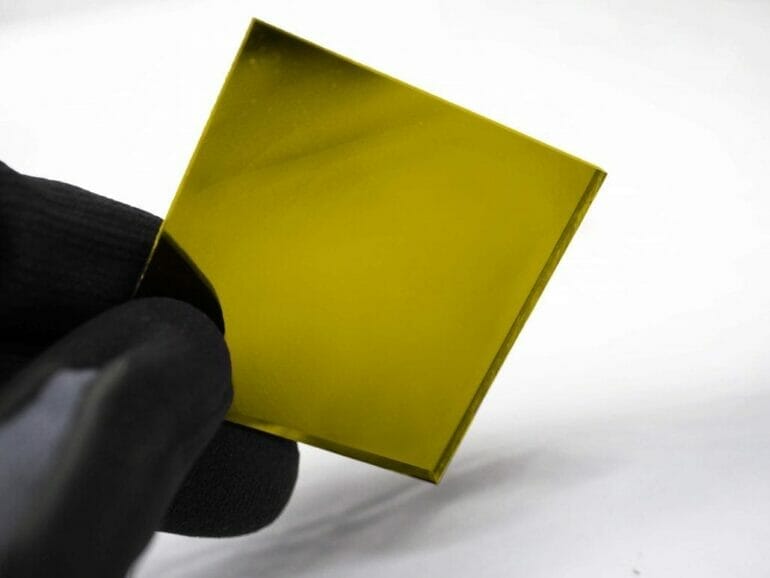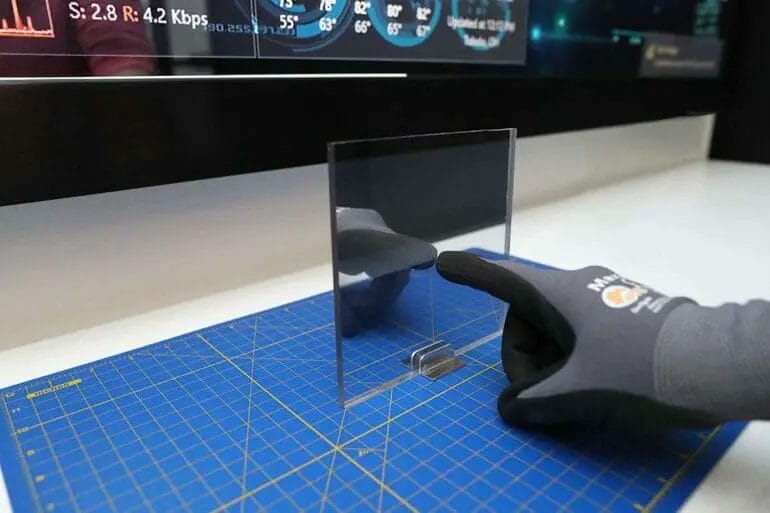An acrylic two-way mirror, also known as a one-way mirror, is a specialized type of mirror that allows light to pass through from one side while reflecting it back like a mirror from the other side. It is commonly used in surveillance systems, TV studios, and theatrical applications.
This type of mirror is made from a sheet of acrylic with a special coating that creates a partially reflective surface. It provides privacy and enables one-way visibility, making it ideal for situations where observation is required without being observed.
The acrylic material used in a two-way mirror is lightweight, shatter-resistant, and more durable than traditional glass mirrors. It can be easily cut into various shapes and sizes, making it versatile and suitable for different applications.
Acrylic two-way mirrors are popular in home security systems, allowing homeowners to monitor their property discreetly. They can also be used in retail stores for surveillance or in cosmetic displays to create an interactive shopping experience.
Overall, the acrylic two-way mirror offers a combination of functionality, flexibility, and aesthetics, making it a valuable asset in various industries and settings.

Applications of Acrylic Two-Way Mirrors
Acrylic two-way mirrors, also known as one-way mirrors, are a versatile and practical option for various applications. Their unique properties make them ideal for a range of uses, from security and surveillance to artistic installations. In this section, we will explore the different applications of acrylic two-way mirrors and how they can be utilized.
1. Security and Surveillance
One of the primary applications of acrylic two-way mirrors is in the field of security and surveillance. These mirrors are commonly used in police stations, interrogation rooms, and correctional facilities where maintaining visibility while ensuring privacy is necessary. They allow one side of the mirror to be transparent, enabling law enforcement personnel to observe suspects or inmates discreetly, while the other side appears as a reflective surface to the individuals being observed. This unique characteristic helps maintain a sense of control and security in various settings.
2. Smart Mirrors
Acrylic two-way mirrors are also widely used in the development of smart mirrors. These mirrors are equipped with an embedded display panel, transforming them into interactive and information-rich screens. By using technologies such as touch sensors and augmented reality, smart mirrors can provide users with a range of functionalities, including displaying the weather forecast, accessing social media, or even playing videos. The one-way reflective property of acrylic two-way mirrors ensures that the display remains hidden when not in use, maintaining the appearance of a regular mirror.
3. Decorative Installations
Acrylic two-way mirrors can be employed for aesthetic purposes in various architectural and interior design projects. These mirrors can enhance the visual appeal of spaces by creating intriguing visual effects. They can be used to create hidden or secret rooms, optical illusions, or even to add depth and dimension to an area. In addition, acrylic two-way mirrors are frequently utilized in art installations and exhibitions to create interactive and immersive experiences for viewers.
4. Stage Performances and Events
The entertainment industry often utilizes acrylic two-way mirrors for stage performances and events. These mirrors are commonly used in magic acts, where they help create illusions and tricks, such as vanishing or appearing objects. Additionally, they can be incorporated into set designs to enhance lighting effects and create dynamic visual elements. Acrylic two-way mirrors are also utilized in events and exhibitions where privacy is required for backstage areas or VIP sections.
5. Retail and Display Applications
Acrylic two-way mirrors find practical applications in the retail industry as well. These mirrors can be integrated into store displays, allowing retailers to showcase products while monitoring customer behavior discreetly. Acrylic two-way mirrors are also utilized in fitting rooms, enabling customers to view themselves from one side while store employees can monitor for security purposes from the other side.
In summary, acrylic two-way mirrors have a wide range of applications and can be utilized in various industries and settings. From security and surveillance to decorative installations and stage performances, the unique properties of these mirrors make them an excellent choice for diverse requirements. Whether it’s enhancing privacy, creating visual effects, or adding functionality to mirrors, acrylic two-way mirrors offer a versatile solution.

How does an acrylic two-way mirror work?
An acrylic two-way mirror, also known as a one-way mirror, is a specialized type of mirror that allows for one-way visibility. It is commonly used in various applications such as surveillance, privacy, and special effects. But how does this unique mirror actually work?
Firstly, it is essential to understand that a two-way mirror is not truly transparent on one side and reflective on the other. Instead, it manipulates the differential lighting conditions between the two sides to create the illusion of one-way visibility.
The basic principle behind the working of an acrylic two-way mirror is the difference in lighting levels. When the lighting on one side of the mirror is significantly brighter than the other side, the mirror appears reflective on the brighter side while allowing partial visibility from the darker side.
Optical Coating
An acrylic two-way mirror consists of a clear acrylic sheet with a thin, semi-reflective coating applied to one side. This coating is usually made of metal particles or a reflective film, such as aluminum or silver. The coating reflects a portion of the light back and allows the remaining light to pass through.
The reflective coating determines the mirror’s reflective properties and controls the amount of light that passes through. It is crucial to strike the right balance between reflectivity and transparency to achieve the desired one-way visibility effect.
Differential Lighting
In order for the acrylic two-way mirror to function as intended, there needs to be a significant difference in lighting conditions between the two sides. This is typically achieved by creating a bright and well-lit area on one side, while keeping the other side relatively dim or dark.
When the bright side is observed from the dark side, the light reflected from the coating dominates the scene, making it difficult for the viewer on the bright side to see through the mirror. On the other hand, the viewer on the dark side can perceive objects on the bright side due to the greater amount of light passing through the mirror.
It’s important to note that the effectiveness of the one-way visibility effect is influenced by the lighting conditions on both sides of the mirror. If the lighting is too similar on both sides, the mirror may appear reflective from both sides.
Applications of Acrylic Two-Way Mirrors
Acrylic two-way mirrors find applications in various fields:
- Surveillance and security: One-way mirrors are commonly used in observation rooms or interrogation rooms, allowing observers to view suspects without being seen.
- Privacy: Two-way mirrors are used in settings where privacy is required, such as changing rooms, bathrooms, or office partitions.
- Special effects: In the entertainment industry, acrylic two-way mirrors are used to create illusions, magic tricks, and visual effects in movies, theaters, and haunted houses.
In summary, an acrylic two-way mirror works by utilizing differential lighting conditions and a reflective coating to create the illusion of one-way visibility. By understanding the underlying principles, it becomes easier to appreciate the functionality and versatility of this unique mirror.

Choosing the Right Thickness for an Acrylic Two-Way Mirror
When it comes to creating a two-way mirror using acrylic, one of the most important factors to consider is the thickness of the material. The thickness of the acrylic can impact the overall performance and durability of the mirror, making it essential to choose the right thickness for your specific needs. In this section, we will explore the factors to consider when selecting the thickness of an acrylic two-way mirror.
1. Functionality
The first factor to consider when choosing the thickness of an acrylic two-way mirror is the intended functionality of the mirror itself. Are you planning to use it for surveillance purposes, privacy, or artistic applications? Each of these applications may require a different thickness to achieve the desired results.
For surveillance purposes, where a clear and detailed reflection is crucial, a thinner acrylic sheet may be preferred. Thinner sheets typically provide better image clarity and reduce the chances of distortion. On the other hand, if privacy is the main goal, a thicker acrylic sheet may be preferred to prevent any light transmission from the opposite side.
For artistic applications, where the mirror will be used for decorative purposes, the desired thickness may vary depending on the specific design. Thicker acrylic sheets can add depth and dimension to the artwork, while thinner sheets can provide a more delicate and lightweight feel.
2. Size
The size of the two-way mirror also plays a role in determining the appropriate thickness of the acrylic sheet. Larger mirrors may require thicker sheets to ensure stability and prevent any warping or bending over time. Thicker acrylic sheets provide more rigidity, making them suitable for larger-sized two-way mirrors.
Alternatively, if you are working with smaller-sized mirrors, you may opt for thinner acrylic sheets to reduce weight and improve flexibility during installation.
3. Durability
Another important consideration when selecting the thickness of an acrylic two-way mirror is durability. Thicker acrylic sheets generally offer higher resistance to impacts and are less prone to scratching or cracking. If the mirror is expected to be exposed to harsh environments or heavy use, a thicker sheet will provide greater durability and longevity.
However, it’s important to note that thicker sheets might also be heavier and more challenging to handle and install. Therefore, it’s crucial to strike the right balance between durability and practicality based on your specific needs.
4. Budget
Lastly, your budget can also influence the choice of thickness for an acrylic two-way mirror. Thicker acrylic sheets tend to be more expensive than thinner ones due to the increased material cost. Consider your budget constraints and evaluate whether the benefits of a thicker sheet outweigh the additional cost.
Summary
Choosing the right thickness for an acrylic two-way mirror requires careful consideration of its intended functionality, size, durability requirements, and budget constraints. While thinner sheets offer better image clarity and are more lightweight, thicker sheets provide added stability and durability. By analyzing these factors, you can make an informed decision and select the optimal thickness for your acrylic two-way mirror.
Installation and Maintenance Tips for Acrylic Two-Way Mirrors
Acrylic two-way mirrors, also known as one-way mirrors or privacy mirrors, are a popular choice for various applications such as security, surveillance, and interactive displays. These mirrors offer privacy by allowing one side to be reflective while the other side remains transparent. To ensure the proper installation and maintenance of acrylic two-way mirrors, follow these tips:
1. Clean the Surface
Before installing the acrylic two-way mirror, make sure to clean the surface where it will be placed. Use a lint-free cloth or microfiber cloth to remove any dust, dirt, or fingerprints. Avoid using harsh chemicals that may damage the acrylic surface.
2. Choose the Right Adhesive
When it comes to mounting the acrylic two-way mirror, it is important to select the right adhesive for a secure and long-lasting installation. Opt for a high-quality, clear adhesive that is specifically designed for acrylic surfaces. Follow the manufacturer’s instructions for application and curing time.
3. Properly Align the Mirror
Position the acrylic two-way mirror correctly to achieve the desired effect. The reflective side should face the area where you want privacy, while the transparent side should face the viewer’s side. Take measurements and use a level to ensure accurate alignment.
4. Secure the Mirror
Once the acrylic two-way mirror is properly aligned, secure it in place using the chosen adhesive. Apply the adhesive evenly and press the mirror firmly against the surface. Use clamps or weights if needed to keep the mirror in position until the adhesive sets.
5. Handle with Care
Acrylic mirrors are more prone to scratches and damage compared to glass mirrors. Handle the mirror with care during installation and maintenance to avoid any accidental scratches. Use soft, non-abrasive cloths or sponges when cleaning the mirror to prevent surface damage.
6. Regular Cleaning
Maintain the clarity and reflectivity of the acrylic two-way mirror by regularly cleaning it. Use a mild, non-abrasive cleaner specifically designed for acrylic surfaces. Gently wipe the mirror using a soft cloth or sponge in a circular motion to remove any smudges or fingerprints.
7. Avoid Harsh Chemicals
Avoid using harsh chemicals, solvents, or abrasive cleaners on the acrylic two-way mirror, as they can cause surface damage and discoloration. Stick to mild, acrylic-safe cleaners to preserve the mirror’s quality and longevity.
8. Protect from Direct Sunlight
Direct exposure to sunlight over time can cause acrylic two-way mirrors to degrade and lose their reflective properties. Ensure that the mirror is installed in a location where it is not exposed to prolonged direct sunlight. Consider using UV-resistant coatings or films to provide additional protection.
9. Inspect for Damage
Regularly inspect the acrylic two-way mirror for any signs of damage or wear. Look for cracks, chips, or scratches that may affect its functionality or appearance. Replace any damaged mirrors promptly to maintain optimal performance.
10. Seek Professional Assistance
If you are unsure about the installation or maintenance of acrylic two-way mirrors, it is advisable to seek professional assistance. Experienced technicians can provide expert guidance and ensure the correct handling and care of these mirrors.
In summary, installing and maintaining acrylic two-way mirrors requires attention to detail and proper handling. Following these tips will help ensure a successful installation and extend the lifespan of your acrylic two-way mirror.
FAQs
What is an acrylic two way mirror?
An acrylic two way mirror is a type of mirror that allows light to pass through it in one direction while reflecting it back in the other direction. It is made from acrylic, a type of plastic material, which makes it lightweight and shatterproof.
Conclusion
In conclusion, the acrylic two-way mirror is a versatile and innovative solution that offers both functionality and elegance. With its unique properties, this mirror allows for privacy and observation from different angles, making it ideal for various applications. Whether used in architectural designs, security systems, or creative installations, the acrylic two-way mirror provides an exceptional blend of aesthetic appeal and practicality. Its lightweight and durable nature, coupled with its cost-effectiveness, make it a preferred choice for many projects. So, if you’re looking to add a touch of sophistication and functionality to your space, consider incorporating the acrylic two-way mirror into your design.
